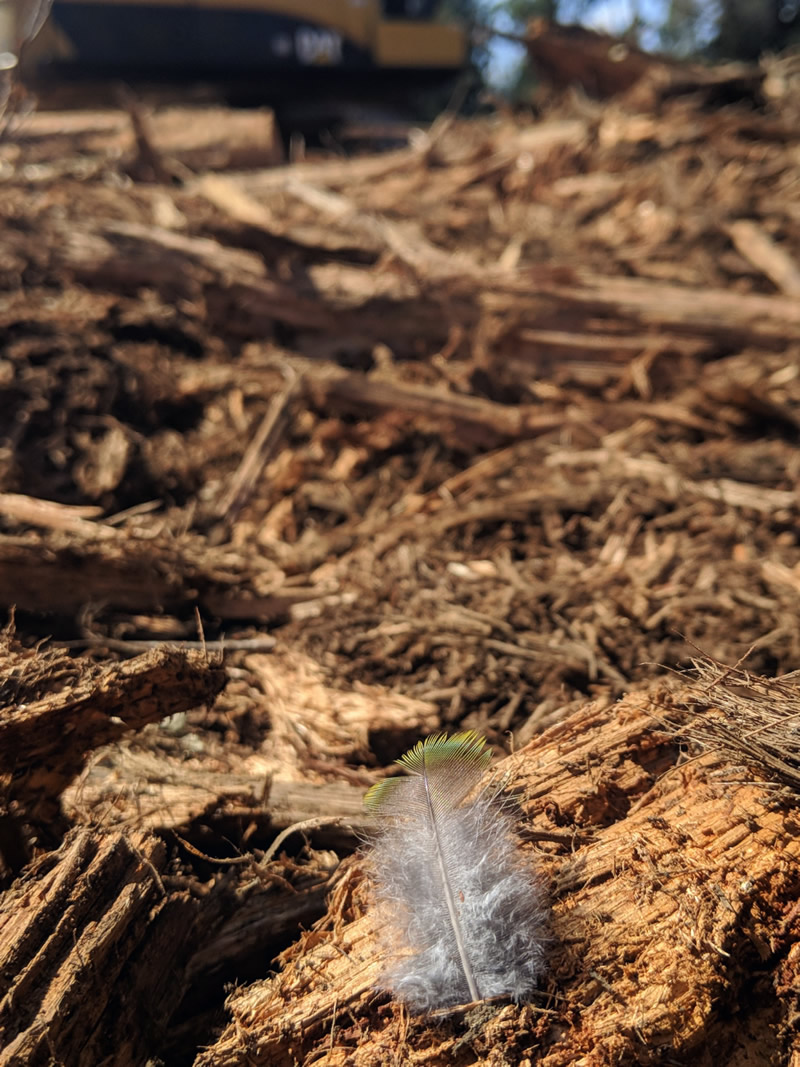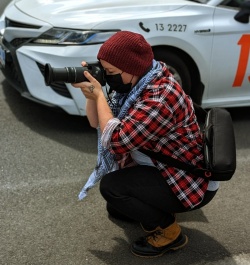News & Media > Editorials > Defending Takayna: the Animal Rights Perspective
Defending Takayna: the Animal Rights Perspective
The first time I ever walked into an operational slaughterhouse it was like a punch to the soul. The sight of so many beings lined up to be killed, the bodies of those already dead and the cloying smell of blood is an experience that is impossible to adequately describe.
It was an experience that was recently somewhat unexpectedly repeated.
On 7/2/2020 I was honoured to join an amazing crew of activists operating in takayna (otherwise known as the Tarkine Forest) working under The Bob Brown Foundation to protect this area of old-growth rainforest from logging approved by the Tasmanian state government. It was my first time entering a clear-fell coup.
And it was just like walking into a slaughterhouse.
All around us lay the bodies of felled trees, some giants who were hundreds of years old destined for woodchips or veneer. The ground was two metres deep with debris from the destroyed rainforest mid-canopy. And as we walked the coup to familiarise ourselves with the landscape, we saw signs of the non-human animals who once lived there.
Clumps of possum fur and fledgling bird feathers were scattered around, from the bodies of those who fled the chaos or could not flee the carnage in time. In some places you could smell the unmistakeable stench of rotting flesh underfoot. In the surrounding rainforest we saw evidence of burrowing crayfish; those who lived in the coup would have been crushed and killed by the bulldozer. And throughout our stay a family of black cockatoos would periodically circle overhead, seemingly confused as they cried their mournful calls.
We were literally walking over a killing ground.

Work began almost immediately. Lock-ons were set up, the tree sits established, a system of watches initiated to allow activists time to position themselves should police or forestry contractors arrive. Our presence made it impossible for the machines to be moved or used further; and after a series of negotiations including four arrests, the logging company agreed to withdraw from this particular coup, protecting the surviving rainforest and preventing further slaughter of these trees, the ecosystem, and the individual non-human animals dependent upon the rainforest for survival.
But the destruction continues elsewhere in takayna, and the logging companies will continue to push further into her verdant spaces to take what they want to supply domestic and international markets. And non-humans will continue to be killed as the industrial logging sanctioned and subsidised by the Tasmanian state government proceeds.
Environmental campaigning is sometimes viewed in the vegan and animal rights communities as being a fringe or secondary concern to the promotion of the rights of non-humans as sentient individuals. It has even been said that environmental concerns “dilute” the animal rights message or act as a distraction. This narrowed single-issue perspective sadly overlooks a significant crossover between the environmental and animal rights spheres, and ignores the plight of those non-humans existing in the wild whose very lives are impacted by human industry. The burrowing crayfish crushed by the bulldozer is no less worthy of our consideration and advocacy as the day old chick shredded in the macerator. The possum killed in the falling tree was as inherently deserving of life as the sow confined to a stall.
However to acknowledge the relevance of environmentalism to the message of animal liberation will necessitate some of us to consider the ethics of our own behaviours even though we may be vegan. We will have to question what we consume and how, the ways we travel, the corporations we are willing to financially support, the way each of us moves through and lives in this world. And just as the average non-vegan may be resistant to the concept of veganism, so too are many of us resistant to the idea that maybe veganism isn’t as inherently honourable as we once thought, that maybe there are further changes we all must make to be truly consistent.
Visiting takayna, seeing the devastation wrought upon her, has been a life altering experience. I will be returning to assist in the defence of takayna again, and of the individual sentient non-human animals who exist there. And it will be as an animal liberationist.



